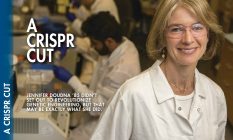
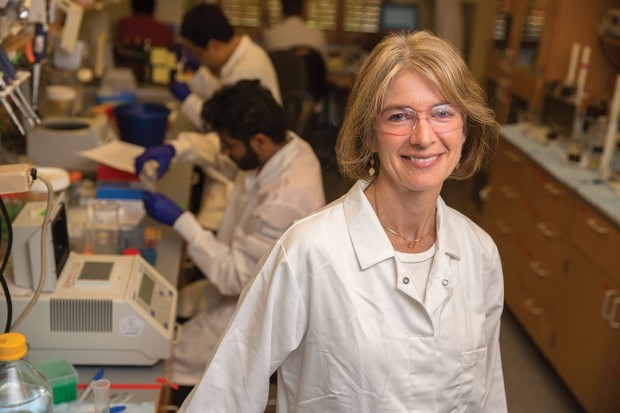
THE ACTION AT scientific conferences mostly happens in conference rooms and hotel bars, but sometimes the players break out to see the sights. That’s what Jennifer Doudna was doing at a conference put on by the American Society of Microbiology in spring 2011. She attended a session on a type of bacterial genetic sequence called a clustered, regularly interspaced, short palindromic repeat—CRISPR, for short. They seemed to have something to do with an immune system for bacteria, though to be honest, Doudna, a biochemist at UC Berkeley who specializes in the three-dimensional structure of genetic material, thought they were “a boutique area of science” at best.
That night, Doudna ran into someone else who was working on the same problem. In Germany, Emmanuelle Charpentier’s lab was studying what most people call “flesh-eating bacteria,” a species of Streptococcus, and Charpentier’s team had found something important in one of their pet bug’s CRISPRs—it made a protein called Cas9. But she needed help to understand all of the moving parts. So Charpentier asked Doudna if she wanted to team up. Doudna said yes. Typical conference stuff.
Over the next few months, Doudna’s postdocs in California worked with Charpentier’s teams in France and Germany. But what they started to figure out began, slowly, to look a lot bigger than just an immune system for flesh-eating bacteria. CRISPR/Cas9 made a complex structure of protein and genetic material that looked like it could cut DNA—which is to say, genes—but it was precisely targeted, almost as simple as putting a cursor between two letters on a computer screen and clicking delete. “There were other techniques in the literature, but they were difficult,” Doudna says. “This is the kind of technique that, in principle, anybody who knows anything about molecular biology will be able to do.”
Doudna and Charpentier wrote a paper for Science, one of the world’s premiere scientific journals. When it came out, in summer 2012, the scientific community went nuts. By the end of 2013, hundreds of papers from labs all over the world had confirmed that, yes, not only was CRISPR a quick-and-easy way to edit a genome as easily as Word edits a magazine article, but it worked in just about every living thing—yeast, zebrafish, mice, stem cells, in-vitro tissue cultures, and even cells from human beings. Most gene-editing techniques work in theory, but in practice require wrestling to the ground complicated, ornery techniques that often fail. But with CRISPR: You want that gene over there? You got it. Companies formed seemingly overnight to turn CRISPR into medicines, research tools, and maybe even profits. Doudna’s lab was at the center of a shift that could be every bit as significant as being able to sequence the genome.

THE KIND OF CELLS that you and I have encode information in the form of deoxyribonucleic acid—DNA, a long backbone of two spiraling strands bridged by “base pairs,” the famous A, T, C, and G that comprise the genetic sequence. But DNA isn’t the only genetic material. When it’s time to make proteins, cells unspool lengths of DNA from their tightly-packed chromosomes and make a cheap copy called ribonucleic acid, or RNA. It’s this RNA that other machinery in the cell reads—the sequence of A, C, G, and U (replacing the T) represent amino acids, and amino acids put together are the proteins of which we are mostly made. It’s a cool system.
RNA, though, is kind of weird. Because in addition to containing information, it can also form structures that do jobs. In fact, the biological machine that reads RNA and outputs proteins, called a ribosome, is itself made of RNA. In this particular corner of molecular biology, the map is also the terrain. This dual personality is behind the “RNA world” theory, the idea that RNA’s ability to both carry and initiate the code of life means it gave rise to all life on earth.
It’s also what compelled Jennifer Doudna, freshly graduated from Pomona, to get her PhD. Growing up in Oahu she knew she wanted to be a biochemist; a set of seminars she attended in high school had sealed that deal. She studied biology as an undergraduate, worked in real labs, and pointed herself at grad school in Boston as soon as it was time to apply. She ended up getting in the laboratory of Jack Szostak, who came up with the RNA world idea.
Doudna decided that she wanted to understand those RNA structures—figuring out the structure of ribosomes and other so-called catalytic RNA. Basically that meant trying to get them to crystalize and then x-ray them. It was, Doudna says, a methodological challenge that was “every bit as cool as I could have imagined.” Eventually she ended up a professor at Yale, and she solved a few of those structures. Doudna was earning a reputation as an ace in a field without many practitioners. “She’s careful and diligent in pursuing all the leads without cutting corners,” says George Church, a Harvard Medical School geneticist who remembers Doudna’s student days there. “And she has a good knack for picking the right topics.”
The West Coast lured her back; in 2010, Doudna took a job at UC Berkeley. “I had always considered myself a basic scientist,” she says. “But you want to feel like your work is going to help solve human problems at some level.” She started working on diseases caused by RNA mutations, and on a technique called RNA interference, or RNAi. Basically it uses small molecules to interrupt the translation of RNA into proteins, to try to fix problems before they start. And to make it work, you have to understand the structural characteristics of RNA.
At about the same time, some food researchers in Copenhagen were learning something new about yogurt. Turning milk into yogurt requires specialized bacteria, but every so often those bacteria get sick—just like people, they get attacked by viruses trying to hijack their cellular machinery. The Danish team found that bacteria exposed in advance to the viruses, called bacteriophages, became immune. It was like vaccination, but for microbes.
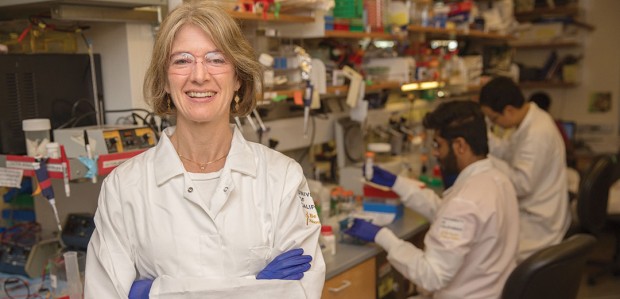
HOW’D IT WORK? In the late 1980s scientists found long, repeating sequences in bacterial DNA that were the same back-to-front—palindromes, in other words. And between the palindromes: nonsense. At least, that’s what they thought at the time. But the genetic gibberish turned out to be quoted from bacteriophage DNA. Put all that together and you got RNA structures that could target specific DNA sequences in a virus, and a protein that would chop that DNA up, destroying it. It was, in other words, an immune system. The Danish yogurt makers had hit upon a rudimentary way of programming it to hit specific viral targets.
That’s why Charpentier started studying it. “I’m interested in how bacteria cause diseases, and how they can become resistant to antibiotics,” she says. “Initially the goal was to look for this class of small RNAs to find one with a nice regulatory function. Coming to CRISPR was in a way a bit by chance.” It wasn’t crazy to imagine that she’d find a useful enzyme in her work—most of the DNA- and RNA-cutting enzymes used in labs were isolated from organisms found in nature.
The thing was, though, that even the most advanced techniques for cutting-and-pasting DNA and RNA were really tough to use. The two best approaches, “zinc-finger nucleases” and “TALEN,” required the creation of a new, bespoke protein every time, coded to the specific sequence a researcher wanted to cut. “Zinc finger nucleases were originally priced at about $25,000 each. You could do it yourself for a little less, but it extracted a corresponding amount of flesh,” says Church. “TALENs looked easier, but they were particularly hard to engineer biologically. It lasted for about a year, a year and a half, as a fad.”
The RNAi Doudna was working with turned out to have similar problems. Usually you try to engineer a bacterial or insect cell to make protein or RNA. However, you then have to purify the protein or RNA that you want out of all the gunk you don’t. Those methods took a whole skill set, and not everyone had it.
In the late 2000s, though, postdocs in Doudna’s lab were starting to get really good results in experimenting with CRISPR. It was easier to do and didn’t need custom-made proteins. Doudna’s and Charpentier’s two labs together realized that in the case of CRISPR/Cas9, the same protein was doing the cutting every time. The only thing that changed were two adjacent structures made of RNA—and you could engineer their function into one, a short, synthetic stretch called a guide RNA that was really easy to make. “We figured out how to program Cas9 to cut any sequence in DNA just by changing the guide RNA,” says Doudna. When she and one of her students realized what they had, sitting in her office at Cal, “we looked at each other and said, this could be an incredible tool for genome engineering.”
On the other side of the world, Charpentier was just as stunned. “All the other tools, each time you want to target DNA at a specific site you have to engineer a new protein. This requires time, and it’s not easy for someone who isn’t used to it,” Charpentier says. “With Cas9, anyone can use the tool. It’s cheap, it’s fast, it’s efficient, and it works in any size organism. It’s revolutionizing biology.”
So what’s CRISPR actually going to be for? That’s still being determined, at labs all around the world—and a handful of companies that spun up in the dizzy aftermath of the Doudna-Charpentier paper. “There’s a distinction between CRISPR-Cas9 as a therapeutic tool, using it to correct mutations in cells that would then be reimplanted in a patient—or delivering Cas9 directly,” says Charpentier. “But the other possibility is more indirect. That’s using it as a tool in labs for development, to help screen drugs or to understand a disease by using it to create models of the disease in animals.” In other words, you could use the technique as a medicine, to correct a mutation directly, or use it to induce a mutation you wanted to study in an animal to test other possible drugs.
Charpentier herself is one of the founders of a company, Crispr Therapeutics, based in Basel, that’s planning to focus on making treatments for people. The company’s CEO, Rodger Novak, is a longtime drug development exec, and the company is well-funded, but even Novak acknowledges what they’re doing won’t be easy. “What biotech pharma always struggles with is the biology of the target. In many instances we don’t know until late-stage development, pivotal human trials, if the target we’re using is the target we need.” Novak says. “The other challenge is delivery. If you go after the liver or the lungs or the brain, very different requirements apply.” He says he’s cautiously confident.
Meanwhile on the other side of the Atlantic, Doudna had teamed up with a few other CRISPR pioneers, as well as George Church, to start her own company: Editas, based in Cambridge. Doudna remains a “co-founder,” but is no longer associated with the company. Church and Doudna got $43 million from a handful of well-known venture investors to spin the company up, aiming, he says, at “a large number of genetic diseases, both common and rare, especially those that might require the removal or editing of DNA, rather than just the addition.” Other therapies in trials are better than CRISPR-Cas9 at adding DNA, inserting a gene, says Church. CRISPR-Cas9 is much better at cutting—harkening back to its original function in the flesh-eating Streptococcus Charpentier studied.
Back in Doudna’s lab at Berkeley, though, her team is still trying to answer some fundamental questions. No one doubts that CRISPR works, but some researchers still worry about whether they can target it narrowly enough to work as a therapeutic. But Doudna would like to know how its targeting system works at all—with just 20 bases of RNA it can somehow home in on any sequence of DNA. No one knows how. “We’d love to figure that out,” Doudna says. And no one knows how it acquires the “spacer” sequences, the genetic information between the palindromes. That would be the secret to how CRISPR works as an immune system in bacteria, and for now it’s a mystery.
As the excitement around CRISPR has continued to grow, no one seems more surprised than Doudna herself. “I was working away in my lab on a bacterial immune system. Genome engineering wasn’t on my radar,” she says. “If you had asked me in 2007 if the CRISPR system was going to be useful, I don’t know what I would have answered.” Today, though, Doudna is a little more sure: If it continues to work as we expect, it’s going to change everything.
EDITOR’S NOTE: In November, Doudna and Charpentier were awarded the 2015 Breakthrough Prize for Life Sciences, each receiving a stipend of $3 million. Their discovery was also featured as one of 10 “World Changing Ideas” on the cover of Scientific American.
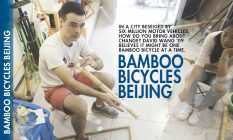

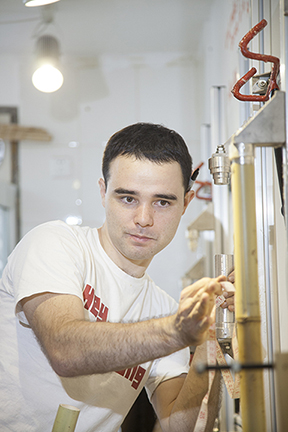
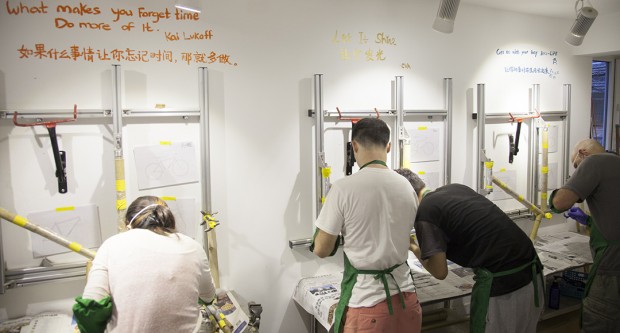
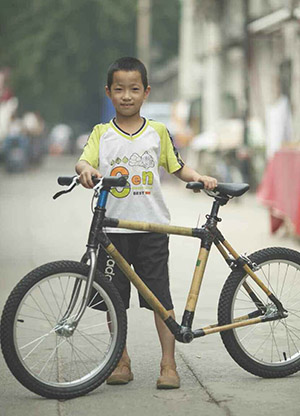
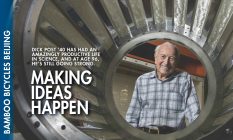

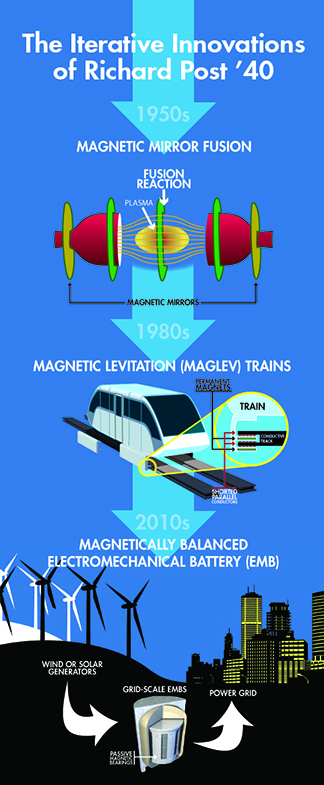

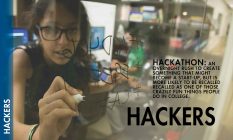
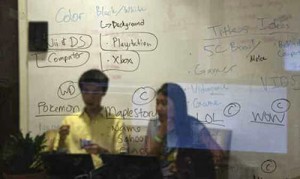 Welcome to the 5C Hackathon, the all-nighter that lures as many as 250 students from The Claremont Colleges each semester to stay up building creative and often elaborate software projects and apps in a mere 12-hour span. It is a deadline-driven, energy-drink-fueled rush to create something that just might become a Silicon Valley startup but is more likely to be remembered as one of those crazily fun things people do in college when they are alight with intelligence and passion.
Welcome to the 5C Hackathon, the all-nighter that lures as many as 250 students from The Claremont Colleges each semester to stay up building creative and often elaborate software projects and apps in a mere 12-hour span. It is a deadline-driven, energy-drink-fueled rush to create something that just might become a Silicon Valley startup but is more likely to be remembered as one of those crazily fun things people do in college when they are alight with intelligence and passion. While some hackathons have gone grander and glitzier—MHack at the University of Michigan awarded a $5,000 first prize this year and HackMIT drew 1,000 competitors to compete for $14,000 in prizes at the Massachusetts Institute of Technology last year—the 5C Hackathon has remained doggedly itself. “We really wanted, instead of pushing for bigger things, to think about how we can get more people into this,” Pollak said. “You’ll see people present (projects) in the morning who didn’t know how to code at the beginning of the week and who actually built something. It’ll be small and ugly, but it will work.”
While some hackathons have gone grander and glitzier—MHack at the University of Michigan awarded a $5,000 first prize this year and HackMIT drew 1,000 competitors to compete for $14,000 in prizes at the Massachusetts Institute of Technology last year—the 5C Hackathon has remained doggedly itself. “We really wanted, instead of pushing for bigger things, to think about how we can get more people into this,” Pollak said. “You’ll see people present (projects) in the morning who didn’t know how to code at the beginning of the week and who actually built something. It’ll be small and ugly, but it will work.”
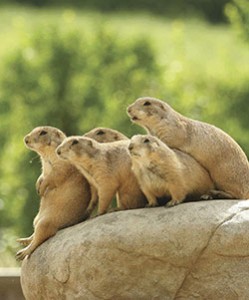 Take grammar and syntax, the rules that determine how words can be combined into phrases and sentences. Most linguists still insist that animal calls lack these fundamental elements of language. But primatologists studying the vocalizations of male Campbell’s monkeys in the forests of the Ivory Coast have found that they have rules (a “proto-syntax,” the scientists say) for adding extra sounds to their basic calls. We do this, too. For instance, we make a new word “henhouse,” when we add the word “house” to “hen.” The monkeys have three alarm calls: Hok for eagles, krak for leopards, and boom for disturbances such as a branch falling from a tree. By combining these three sounds the monkeys can form new messages. So, if a monkey wants another monkey to join him in a tree, he calls out “Boom boom!” They can also alter the meaning of their basic calls simply by adding the sound “oo” at the end, very much like we change the meanings of words by adding a suffix. Hok-oo alerts other monkeys to threats, such as an eagle perched in a tree, while krak-oo serves as a general warning.
Take grammar and syntax, the rules that determine how words can be combined into phrases and sentences. Most linguists still insist that animal calls lack these fundamental elements of language. But primatologists studying the vocalizations of male Campbell’s monkeys in the forests of the Ivory Coast have found that they have rules (a “proto-syntax,” the scientists say) for adding extra sounds to their basic calls. We do this, too. For instance, we make a new word “henhouse,” when we add the word “house” to “hen.” The monkeys have three alarm calls: Hok for eagles, krak for leopards, and boom for disturbances such as a branch falling from a tree. By combining these three sounds the monkeys can form new messages. So, if a monkey wants another monkey to join him in a tree, he calls out “Boom boom!” They can also alter the meaning of their basic calls simply by adding the sound “oo” at the end, very much like we change the meanings of words by adding a suffix. Hok-oo alerts other monkeys to threats, such as an eagle perched in a tree, while krak-oo serves as a general warning.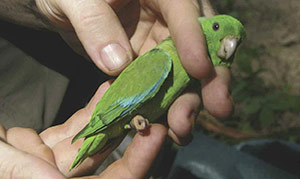 Berg discovered that parrotlets have names by collecting thousands of the birds’ peeps, then converting them to spectrograms, which he subsequently analyzed for subtle similarities and differences via a specialized computer program. And how does a young parrotlet get his or her name? “We think their parents name them,” Berg said—which would make parrots the first animals, aside from humans, known to assign names to their offspring.
Berg discovered that parrotlets have names by collecting thousands of the birds’ peeps, then converting them to spectrograms, which he subsequently analyzed for subtle similarities and differences via a specialized computer program. And how does a young parrotlet get his or her name? “We think their parents name them,” Berg said—which would make parrots the first animals, aside from humans, known to assign names to their offspring.
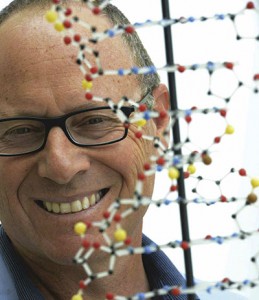 Expert witnesses at contentious trials can expect to be challenged, even discredited. But when he took the stand last year in a complex biotech patent case, Pomona Biology Professor Lenny Seligman never anticipated that his groundbreaking work at Pomona would be relegated to the “ash heap of failure.”
Expert witnesses at contentious trials can expect to be challenged, even discredited. But when he took the stand last year in a complex biotech patent case, Pomona Biology Professor Lenny Seligman never anticipated that his groundbreaking work at Pomona would be relegated to the “ash heap of failure.”
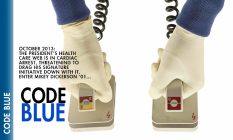
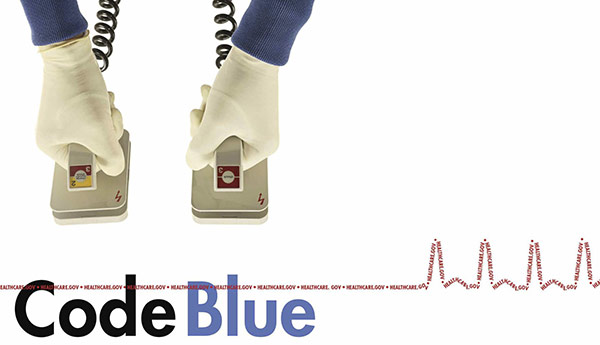 Lunch was supposed to be casual. Mikey Dickerson ’01 was in Chicago catching up with Dan Wagner, a friend who’d been in the trenches with him on Barack Obama’s campaign for the presidency in 2012. Wagner had since gone on to found a company, Civis Analytics; Dickerson was a site reliability engineer at Google, one of the people who make sure that the search engine never, ever breaks down.
Lunch was supposed to be casual. Mikey Dickerson ’01 was in Chicago catching up with Dan Wagner, a friend who’d been in the trenches with him on Barack Obama’s campaign for the presidency in 2012. Wagner had since gone on to found a company, Civis Analytics; Dickerson was a site reliability engineer at Google, one of the people who make sure that the search engine never, ever breaks down. With 12 days left before the deadline, Dickerson was ready to go home. He gave a speech listing the five mission-critical things remaining, and attempted to flee back to California. But the bosses panicked. The Ad Hoc guys can’t go home, they said. They gave him the service-to-your-country pitch. They begged. So Dickerson agreed to stay through to the end—with some conditions. He got to set the specific technical goals for what his team and the rest of the government coders would do. And he got to hire whomever he wanted, without arguing the point. He wanted to be able to trust the new team members, so he chose them himself. Eventually a rotating team of Google site reliability engineers started coming through to keep the project on track.
With 12 days left before the deadline, Dickerson was ready to go home. He gave a speech listing the five mission-critical things remaining, and attempted to flee back to California. But the bosses panicked. The Ad Hoc guys can’t go home, they said. They gave him the service-to-your-country pitch. They begged. So Dickerson agreed to stay through to the end—with some conditions. He got to set the specific technical goals for what his team and the rest of the government coders would do. And he got to hire whomever he wanted, without arguing the point. He wanted to be able to trust the new team members, so he chose them himself. Eventually a rotating team of Google site reliability engineers started coming through to keep the project on track.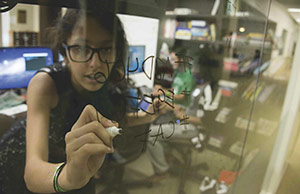 A geek hunched over a laptop tapping frantically at the keyboard, neon-bright lines of green code sliding up the screen—the programmer at work is now a familiar staple of popular entertainment. The clipped shorthand and digits of programming languages are familiar even to civilians, if only as runic incantations charged with world-changing power. Computing has transformed all our lives, but the processes and cultures that produce software remain largely opaque, alien, unknown. This is certainly true within my own professional community of fiction writers—whenever I tell one of my fellow authors that I supported myself through the writing of my first novel by working as a programmer and a computer consultant, I evoke a response that mixes bemusement, bafflement and a touch of awe, as if I’d just said that I could levitate. Most of the artists I know—painters, film-makers, actors, poets —seem to regard programming as an esoteric scientific discipline; they are keenly aware of its cultural mystique, envious of its potential profitability, and eager to extract metaphors, imagery and dramatic possibility from its history, but coding may as well be nuclear physics as far as relevance to their own daily practice is concerned.
A geek hunched over a laptop tapping frantically at the keyboard, neon-bright lines of green code sliding up the screen—the programmer at work is now a familiar staple of popular entertainment. The clipped shorthand and digits of programming languages are familiar even to civilians, if only as runic incantations charged with world-changing power. Computing has transformed all our lives, but the processes and cultures that produce software remain largely opaque, alien, unknown. This is certainly true within my own professional community of fiction writers—whenever I tell one of my fellow authors that I supported myself through the writing of my first novel by working as a programmer and a computer consultant, I evoke a response that mixes bemusement, bafflement and a touch of awe, as if I’d just said that I could levitate. Most of the artists I know—painters, film-makers, actors, poets —seem to regard programming as an esoteric scientific discipline; they are keenly aware of its cultural mystique, envious of its potential profitability, and eager to extract metaphors, imagery and dramatic possibility from its history, but coding may as well be nuclear physics as far as relevance to their own daily practice is concerned.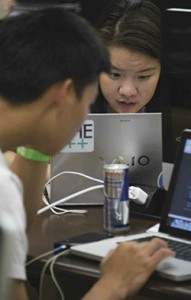 A poet, however, might wonder why Lampson would place poetry making on the same spectrum of complexity as aircraft design, how the two disciplines—besides being ‘creative’—are in any way similar. After all, if Lampson’s intent is to point towards the future reduction of technological overhead and the democratization of programming, there are plenty of other technical and scientific fields in which the employment of pencil and paper by individuals might produce substantial results. Architecture, perhaps, or carpentry, or mathematics. One thinks of Einstein in the patent office at Bern. But even the title of Lampson’s essay hints at a desire for kinship with writers, an identification that aligns what programmers and authors do and makes them—somehow, eventually—the same.
A poet, however, might wonder why Lampson would place poetry making on the same spectrum of complexity as aircraft design, how the two disciplines—besides being ‘creative’—are in any way similar. After all, if Lampson’s intent is to point towards the future reduction of technological overhead and the democratization of programming, there are plenty of other technical and scientific fields in which the employment of pencil and paper by individuals might produce substantial results. Architecture, perhaps, or carpentry, or mathematics. One thinks of Einstein in the patent office at Bern. But even the title of Lampson’s essay hints at a desire for kinship with writers, an identification that aligns what programmers and authors do and makes them—somehow, eventually—the same.

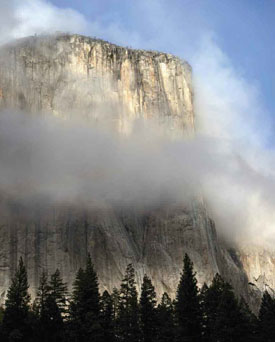 As it is, things have worked out nicely. California’s climactic geography came last, a necessary if unanticipated coda to what is often called the American experience. Knowing the end of the story—so far— makes it easy to grasp how incomplete this country would have felt without California, the volatile edge, it seems, of all our national imaginings. For much of the way westward, the story was about settling down, finding a homestead and improving it. But California was never really about settling down. Its very geology is transient. This is where you file a claim on the future and hope that events don’t overtake you.
As it is, things have worked out nicely. California’s climactic geography came last, a necessary if unanticipated coda to what is often called the American experience. Knowing the end of the story—so far— makes it easy to grasp how incomplete this country would have felt without California, the volatile edge, it seems, of all our national imaginings. For much of the way westward, the story was about settling down, finding a homestead and improving it. But California was never really about settling down. Its very geology is transient. This is where you file a claim on the future and hope that events don’t overtake you.